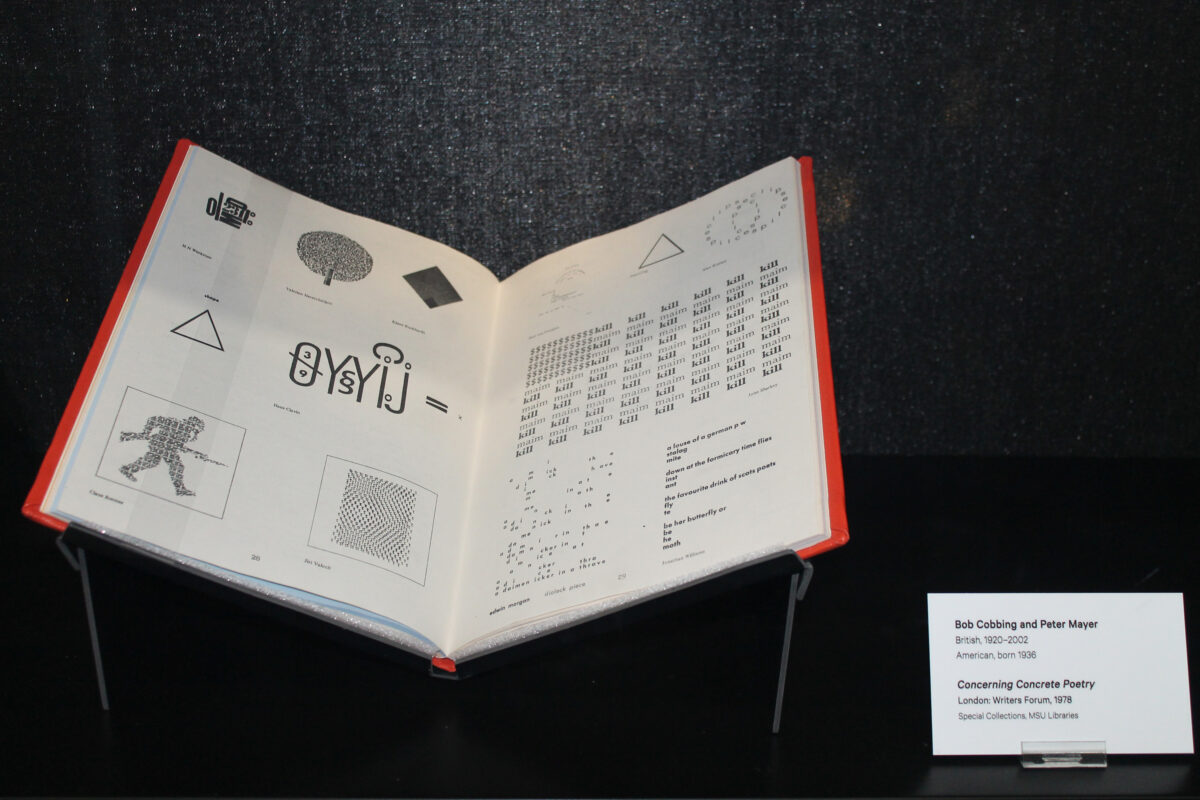Wordplay: Conceptual Practices in Print is organized by the Eli and Edythe Broad Art Museum at Michigan State University and curated by Yesomi Umolu, Assistant Curator, with Jenny Carty, Curatorial Assistant. This exhibition is presented in response to themes explored in Postscript: Writing After Conceptual Art. The curators of Wordplay are grateful for the close collaboration of Peter Berg, Head of Special Collections and Associate Director for Special Collections & Preservation, MSU Libraries; and Terrie Wilson, Head of the MSU Fine Arts Library. Support for this exhibition is provided by the MSU Broad’s general exhibitions fund.
About the Exhibition
Comprising nearly two dozen publications from the collections of the Michigan State University Libraries, this display explores the capacity of language to reflect on the human experience while upending literary and artistic traditions.
The examples by the Oulipo group, a consortium of writers that included Raymond Queneau and Georges Perec, represents the use of self-imposed constraints to generate new writing structures and patterns. Their work reflects the literary developments of the 1950s and 1960s, which paralleled dramatic aesthetic changes in the visual arts that led to the birth of Pop art, Fluxus, and Conceptualism. Queneau’s seminal work A Hundred Thousand Billion Poems (1961) is composed of ten cut-up sonnets that can be rearranged in thousands of combinations to produce an endless array of unique poems. In a number of collaborative projects including Games at the Cedilla; or, The Cedilla Takes Off (1967), Fluxus artists Robert Filliou and George Brecht used similar strategies to stretch the limits of language. Other Fluxus works, such as Dick Higgins’s A Book About Love & War & Death (1969) and Computers for the Arts (1970) pushed toward our contemporary technological landscape by using early computer technology and chance operations to generate texts.The work of concrete poet Bob Cobbing prompts a consideration of how text is digested visually, offering typographic explorations that echo late nineteenth-century projects by poet Stéphane Mallarmé. Whilst Adrian Piper’s Colored People (1991) and Ed Ruscha’s A Few Palm Trees (1971) represent the efforts of conceptual artists to unearth novel connections between objects, images and words.
Together, the publications on view in Wordplay share an interest in drawing inspiration from the past to test the present boundaries of the written word. Their pursuits, in turn, continue to pave the way for new generations of conceptual practitioners.
